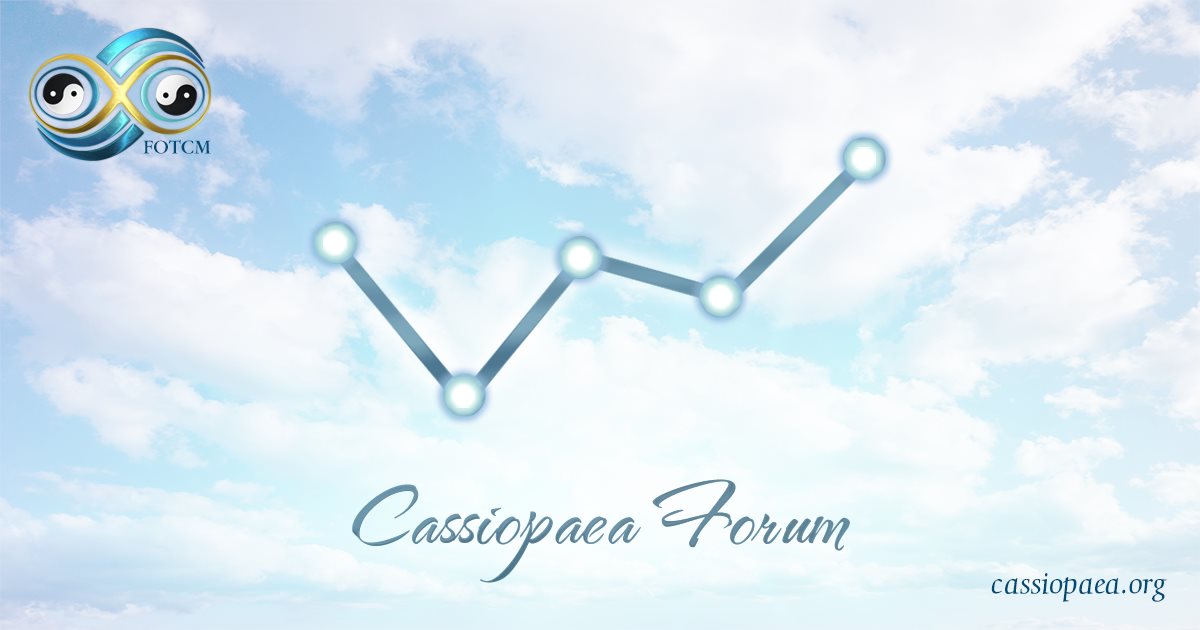Q: (L) Yes. Speaking of space rocks... [laughter]
(Andromeda) Segue!
(L) Yes... I guess I'm gonna put the cat among the pigeons. I've got two topics in my mind. The first one is the black hole of Mecca. Now, this guy Peter Townsend - which is probably a pseudonym because he probably won't write under his own name since he fears for his life - says that Mecca didn't exist and that Islam as a religion started out in very strange ways. Basically, he says that Islam is not a very friendly religion according to his way of thinking. Now, I don't think we need to ask any questions about the research he did, because that's all pretty plain and clear. But his conclusions are that Islam needs to be reformed or something needs to be done about it because it's not a very friendly bunch of people at present due to the beliefs that are inculcated into them from birth. Aside from the teachings in Islam that all other religions are wrong and only Muslims are right, and Muslims are entitled to kill non-believers, he's basically suggesting that inherent in Islam is a corruption, that the religion itself is inherently bad. But we've been discussing it,
and we don't see that there is that much difference between one fraudulent religion and another. I mean, Christianity and Judaism are both pretty bad in some ways. So, I don't see... Is Islam inherently corrupt and a bad influence in general?
A: Consider carefully the developmental pathways
of the three test cases. First you have Judaism.
It began as a widespread cult of comet/storm god worship. It was reformulated
to meet the needs of a dispossessed people and encourage solidarity among them. Christianity
had a dual beginning. First was
an apocalyptic cult of intolerance and violence. Second was a message of spiritual transformation based on the life of an extraordinary man full of mercy. Islam
is the miscegenation of the worst of both.
How can there be any positive elements out of complete falsehood?
Q: (L) So, you're saying that Islam is a mix of the worst parts of Judaism and Christianity? [Review of last answer] Is it possible that there was a strong influence of the Dead Sea Scroll people on the formulation of Islam?
A: Indeed!
Q: (L) And based on the studies of the Dead Sea Scrolls people,
that was a bunch of schizoid psychopaths.
(Joe) Were they Jews?
(L) Yeah. They were Jews
that thought all other Jews were corrupt and only they had the truth, and they were all itching to go out and kill everybody who didn’t believe the way they did. There is a whole field of studies devoted to the Dead Sea Scrolls and related texts such as the Books of Enoch and Enochian apocalypticism. I’ve got quite a bit of it covered in my text on Paul, Josephus and Jesus.
(Joe) So they were the origin of the first wave of Christianity. And then Caesar came along.
(L) Well, actually,
Paul came along with his vision of the merciful savior, Caesar. This was the background to the several puzzling references in the New Testament
to a conflict between Paul and the “Jerusalem Christians”. There was the Dead Sea Scrolls types, Zealots, etc, and then Paul. Again, I’ve covered this pretty well in my
yet-to-be-published book {
link} on the topic. And don’t forget
that the creators of Islam borrowed heavily from the stories of Abraham and Moses which the Jews invented with models of real historical figures of Greek and Egyptian history back when the OT was written in about 272 BC. All of that is discussed by Gmirkin and Wajdenbaum. (Argonauts of the Desert etc.} The inventors of Islam didn't know that they were creating stories based on already invented stories, etc.
(Joe) So the worst of both Judaism and early Christianity
would be intolerance and violence and storm god worship. Islam
more than any of the religions is influenced by cataclysms in that sense, no?
A:
Yes
Q: (Joe) At the time that it appeared, was there stuff going on?
It was the Dark Ages, right?
A:
Yes
Q: (L) So that would give
a perfect explanation for why they were attracted to that apocalyptic literature. It was a time when it had the most meaning.
(Joe) And it's relatively recent.
(L) And also if some of these people like Heinsohn and Fomenko are right
about years being inserted into the historical timeline, it could have been even more recent and more close together than we think.
History is such a muddle because of all the manipulations.
(Andromeda) So Islam is based mostly on fear and avoidance, whereas even Judaism had the idea of solidarity behind it. And Christianity had spiritual development. Islam has none of that.
(L) No, there doesn’t appear to be anything about real spiritual development in Islam other than trying to model oneself on Muhammed and “submitting” to his alleged declarations; that’s a bit problematical when you find out that the original model of Muhammed was probably a Dead Sea Scrolls inspired apocalypticist, likely a schizoid psychopathic fanatic. Go out and kill some people and you get grapes in the afterlife, not naked women. You get grapes.
(Andromeda)
How many grapes? [laughter]
(L) 72!! Well, that was one of things that was really surprising. Apparently,
there was a mistranslation or misunderstanding of the word somehow, and so you only get 72 grapes. [laughter]

(Andromeda) A lot of people are gonna be very disappointed! [laughter]




